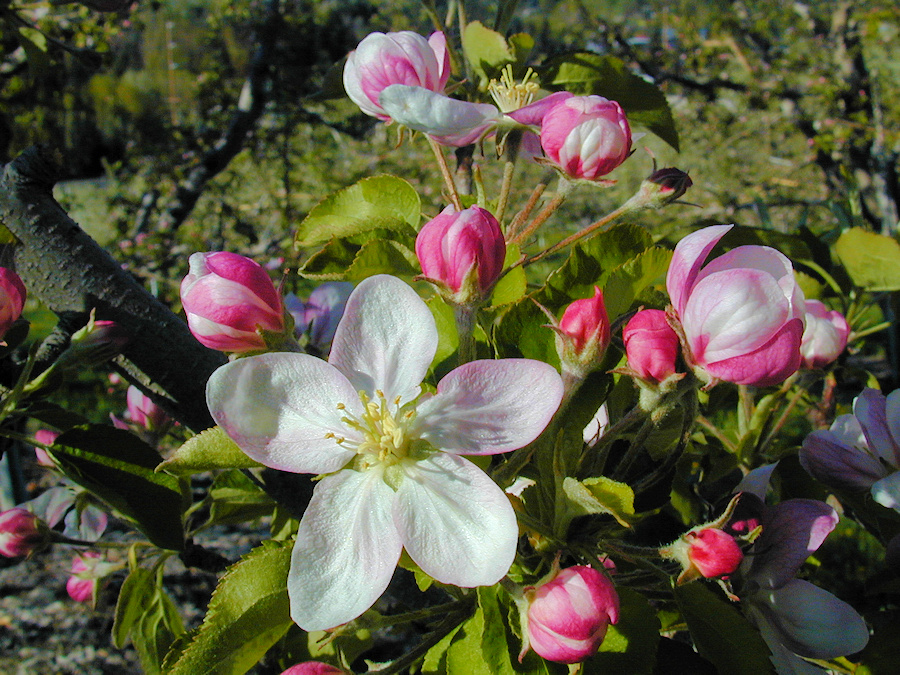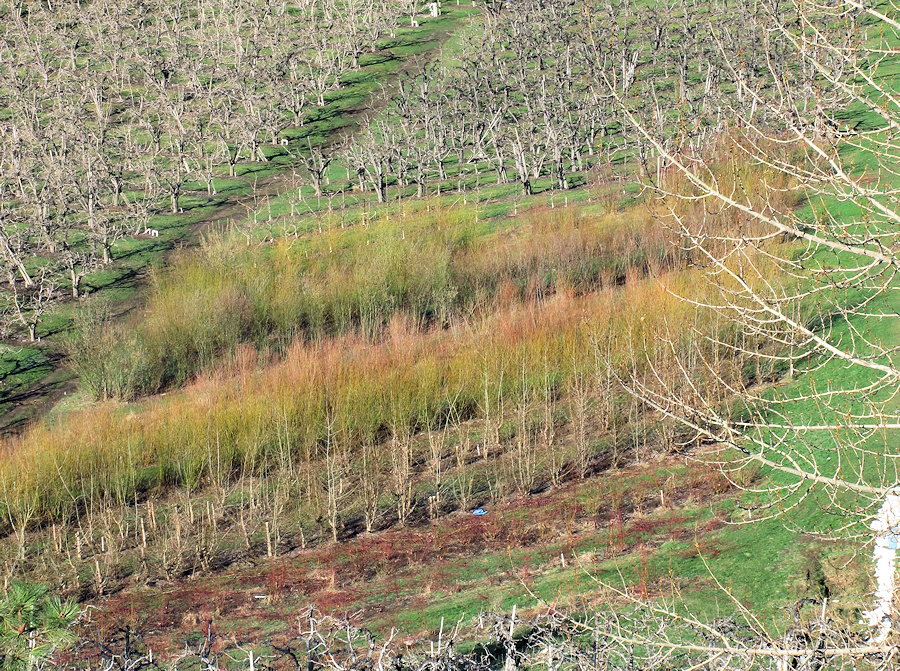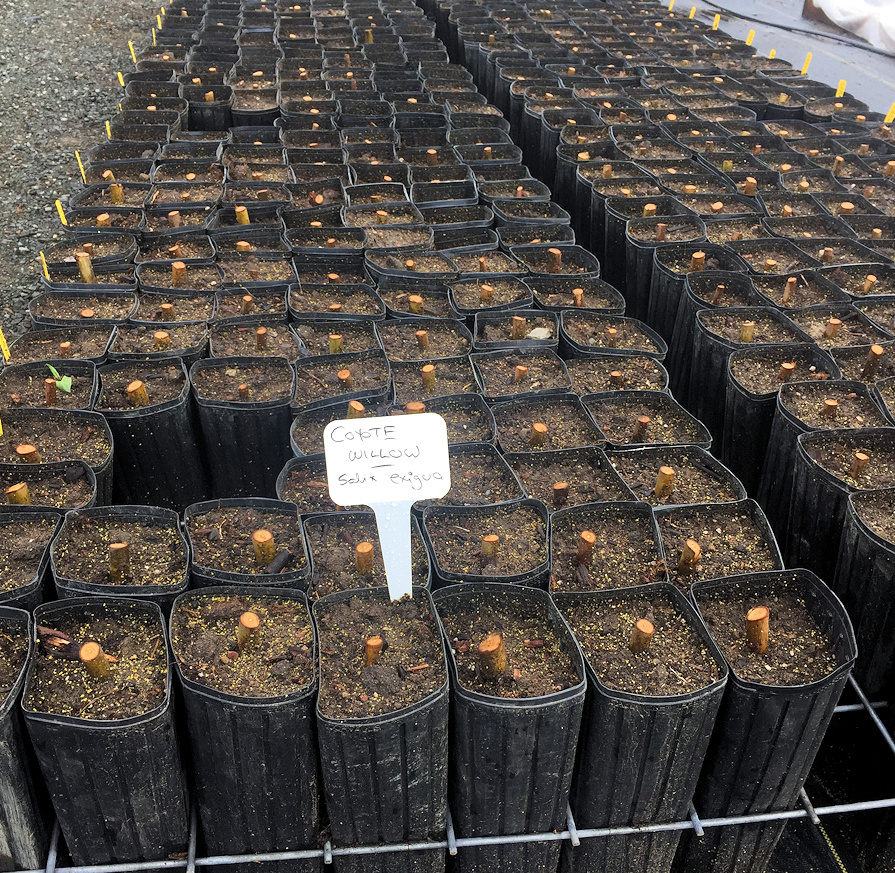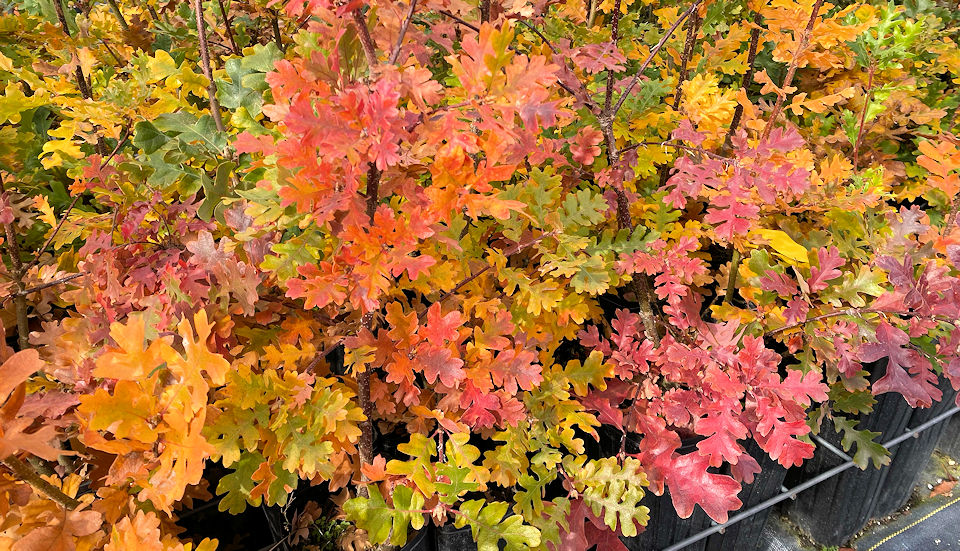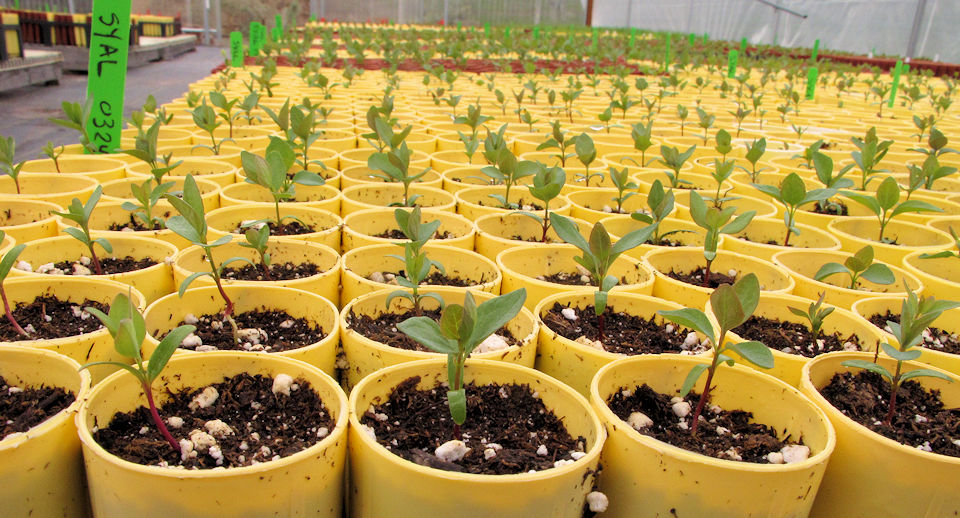Live stakes and cuttings

In late winter, before any seeds have germinated in the nursery, we are out in the snow with loppers and clippers in hand. Our objective? Collecting live stakes and cuttings from stands of willows and cottonwoods.
A cutting bed at Derby Canyon Natives of McKenzie willow (Salix prolixa), with Hobbes
We make these collections while the plants are still dormant, before bud swell. The live stakes are cut based on specific customer requests and are three to five feet long, with a minimum diameter of 1/2″-3/4″. The stakes are inserted directly into the soil along streams, rivers, lakes and other riparian areas, deep enough so that the base of the stake remains in contact with moist soil throughout the growing season. For most willow species and cottonwood, roots will develop along the stem and grow out into the surrounding earth. With proper site selection and installation, using live stakes can be an economical and effective means of revegetating and stabilizing disturbed areas.
Three foot live stakes bundled and ready to go
The best cuttings come from healthy, vigorous stands with clear and straight one and two-year old wood. Only some wild stands are good sources of these quality cuttings. For a more reliable source, we established two one acre plantings that contain black cottonwood, red osier dogwood and six willow species. These areas were blocks of Golden Delicious apples that, despite having large, old and beautiful trees, were often money losers due to poor fruit prices; I do miss the lovely apple flowers and fragrance.
A cutting block where we once grew Goldens
We also make cuttings for propagating more plants in the nursery. These cuttings are 4″-12″ long, depending on the size of container we will grow them on in. After making these cuttings in February to early March, we refrigerate them until about mid April at which time they are soaked for three days, then stuck into growing media. In the topmost photo you see black cottonwood (Populus balsamifera) shoots emerging twelve days after sticking. In the two photos below you see 12″ cuttings of coyote willow (Salix exigua) recently inserted into Treepots, and then a resulting plant five months later.



